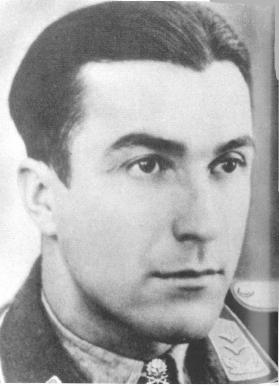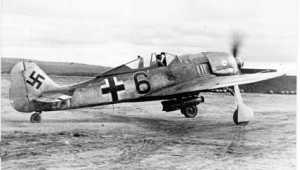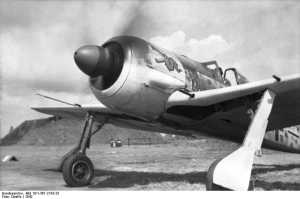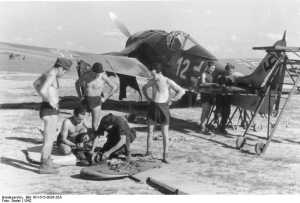Otto Kittel
Leading Fw 190 Ace
By Stephen Sherman, Dec. 2008. Updated July 7, 2011.
The highest scoring Fw 190 ace, Oberfeldwebel Otto Kittel, began his career on the Bf 109, but started slowly. An NCO pilot with the famed JG 54 Grünherz, the "Green Hearts," Kittel found the range once his unit converted to the Focke-Wulf in early 1943.
He was born on in Kronsdorf (in the Sudeten region of the present Czech Republic), and joined the 2.Staffel of JG 54 in February 1941. On 31.May 1941, due to engine trouble, he bailed out of his Bf 109 F-2, and landed at Spikeroog, only lightly injured. In June of 1941, with the start of Operation Barbarossa, he shot down a Yak-1 fighter, an SB-2 bomber and an IL-2. By the end of 1941, he had achieved 17 victories (not a very impressive number, considering the relatively easy time that the Luftwaffe had in those early days). JG 54 was based at Krasnogvardeisk.
In July, 1942, he was married, by means of a long-distance ceremony Fertrauung, a German wartime policy. On 19.Feb.1943 he shot down his 39th plane, which also was the 4000th victory of JG 54.
After achieving his 47th victory on 15 March 1943 (while flying FW 190A-4, serial number 2481), Kittel made an emergency landing 60 kilometers (37 miles) behind Russian lines. After landing on an open icy field, he immediately set out for some woods he saw at 2 kilometers distance. Sitting in the woods for a short break, he searched his pockets and found three "Drops" and two cigarette packets, but no matches. He also had a gun, a clock and a compass. In his haste to leave his landing site, he had forgotten his supplies and his gloves. Bitterly cold and underclothed, he crossed the frozen Ilmen Lake and after 3 days without food, reached the German troops. After he returned to his Group, 18.March 1943, he was promoted to Oberfeldwebel and got the German Cross in gold.
He received the Ritterkreuz des Eisernen Kreuzes (Knight`s Cross to the Iron Cross) on 29 Oct. 1943 upon achieving his 123rd victory. And he got the "Oak Leaves" in April, 1944.
From November 1943 through January 1944, he was Instructor of the EJGr.Ost, in Biarritz, France. 31.December 1943, Kittel started to attack American bombers, but didn't get involved in a dogfight. Some of his EJGr.Ost comrades were upset because of that.
In March 1944, Kittel returned to JG 54 on the Russian Front, but after just two months was transfered to the western front, the Normandy invasion area, to help III./JG 54.
He earned his Schwerter (Swords) on 25 November 1944 after achieving 239th victory.
Kittel was killed on (his 583rd mission), over Courland by an Il-2 Stormovik.
Sources
Aces of the Reich: The Making of a Luftwaffe Fighter Pilot, by Mike Spick, Greenhill Books, London, 2006
Illustrated Dictionary of Fighting Aircraft of World War II, by Bill Gunston, Salamander Books, London, 1988
JG 54 "Greenhearts" Homepage



